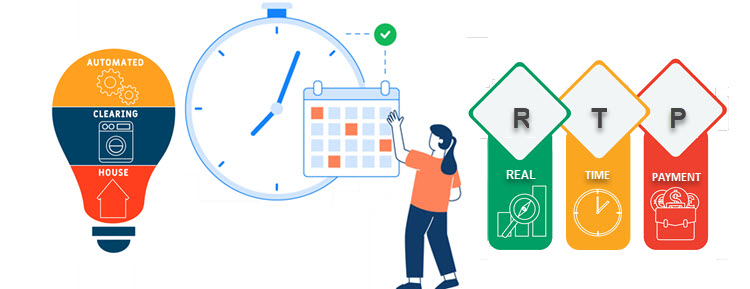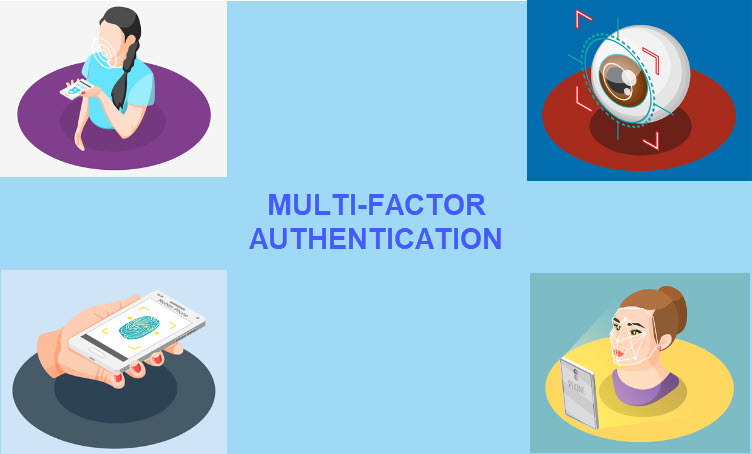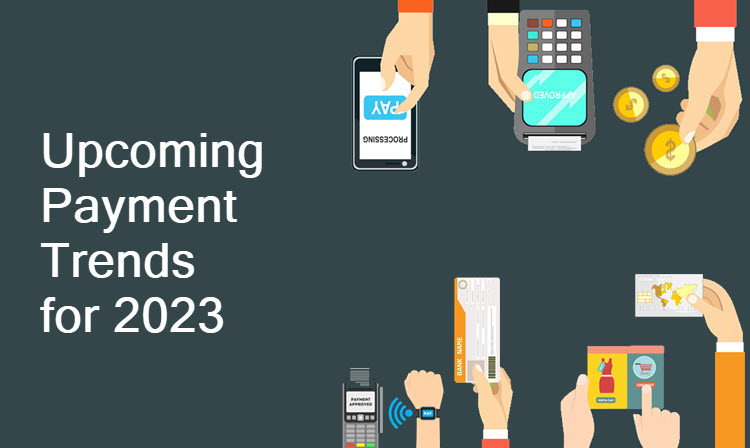The digital payments market has seen significant growth in 2021. As reported by Statista, by the end of 2021 the global market will have reached $6.75 trillion.
According to the same source, digital commerce payments make up $4.17 trillion of the market.
Since the payments market is diversifying, new trends are emerging, offering merchants various ways to accept and process payments.
This article examines the most important online payment trends awaiting us in 2023 and explain how they will affect the payments market.
Payment Trends For 2023: 10 Key Trends

In 2023, the following ten payment trends will influence how merchants and customers conduct business transactions.
1. Contactless Card Payments
A contactless payment doesn’t require that the customer’s payment card or smartphone physically touch the point of sale (POS) to confirm the transaction. They communicate thanks to near-field communication (NFC), technology based on radio frequency identification (RFID). The particular radio frequency enables the payment reader to receive data when the smartphone or card is tapped or waved within 4 inches (10cm) of the reader.
Contactless card payments bring merchants the following benefits:
- Increased security. In a contactless payment, the customer data is stored and encrypted on a computer chip inside the card. Compared with magnetic stripes on traditional bank cards, the chip reduces the risk of the buyer’s payment information being stolen and, consequently, mitigates payment fraud. The risk of chargeback decreases, keeping the merchant’s chargeback rate low.
- Convenience. Merchants who accept contactless cards offer their customers a better shopping experience. Brick-and-mortar businesses offering contactless payment can process more shoppers per unit of time.
- Cashless payments. Accepting contactless card payments reduces the amount of cash merchants handle, store, and transfer. The less cash in the store, the lower the risk of theft and asset loss.
Note: eWallets are a popular type of contactless card payment types. Check out our comparison of eWallets and credit cards to learn more.
2. Unified Commerce

Unified commerce is an ecommerce software system that collects the data merchants have obtained about customers and their shopping habits across different channels and stores it in one place.
Such a system gives merchants a more detailed view of their operations and improves the accuracy of the business data they collect. It enables merchants to monitor and track their customers’ habits and activities on different digital channels via a single platform, making it easier to develop more personalized offers.
3. Cloud-Based Payments
Cloud-based payments are transactions conducted, processed, and accepted in the cloud rather than through tangible devices, such as POS terminals.
They bring significant benefits to merchants.
- Enhanced scalability. Merchants can change the range and number of payment features they use, depending on their processing requirements at that very moment.
- Greater affordability. Providers usually charge for their cloud-based services on the basis of a tiered pricing model. That way merchants can choose the most suitable tier for their current processing volume needs and budget.
- Smooth data integration. Merchants can easily integrate cloud-based payment systems with accounting software and management tools. This facilitates smooth and convenient customer data integration, enabling merchants to monitor and analyze their own revenues and their customers’ shopping habits.
4. Online Subscriptions
Security improvements and advancements in SaaS billing have led to a significant upsurge of online subscription businesses. Conversely, offline subscriptions have plummeted in the last few years.
For instance, Netflix had about 70 million online subscribers at the end of 2015. As of December 2021, they have surpassed 200 million digital subscribers.
Thanks to the simplicity and scalability of subscription services, both merchants and customers will continue to embrace online subscriptions in 2023. The key benefits for merchants are predictable revenues and a higher customer retention rate thanks to recurring customers.
On the other hand, subscribers enjoy the freedom of pay-as-you-go and monthly subscription billing, instead of long-term contractual commitments.
5. Artificial Intelligence and Machine Learning for Fraud Detection

Artificial intelligence (AI) tools are becoming important elements in ecommerce fraud prevention and detection.
AI systems use machine learning to collect and process data from previous fraud attempts and apply prediction patterns to curb potential fraudulent behavior.
Based on the analyzed data, AI anti-fraud solutions identify fraudulent payment attempts, decline such payments to stop fraud and chargeback. and notify merchants as soon as they spot the threat.
As AI tools get more advanced, they will be able to predict fraudulent transactions with even greater accuracy. Expect that AI solutions will start supervising transaction in real-time.
Note: Merchants using CCBill’s processing services are protected with Smart Checkout, a comprehensive fraud-protection system that conducts a detailed scan of every transaction before the data is sent to credit card associations and banks. It effectively reduces fraud risk and curbs excessive chargebacks.
6. Real-Time Payments and ACH Transactions

ACH payments are one of the most popular payment options in the US. This is an electronic money transfer from one bank account to another, supervised and facilitated by the Automatic Clearing House – the National Automatic Clearing House (NACHA) in the US. It takes about 24-48 (sometimes up to 72) hours for an ACH payment to clear.
Even though ACH transactions are widespread and commonly used by merchants, they are facing a serious challenge: real-time payments (RTPs). RTPs are settled and cleared in real-time, meaning that the transferred funds are immediately available on the recipient’s account. However, RTPs come with higher processing fees.
Merchants that need fast and expedient money transfers will opt for RTPs in 2023, rather than ACHs.
Note: Bear in mind that RTP transfers are irrevocable, whereas ACH transactions can be revoked. Also, ACH payment processing time is not the same for all ACH transactions (e.g., same-day ACH payments settle faster). So, consider both these payment options when in need of a fast and reliable money transfer.
7. Mobile Wallets and eWallets
A mobile wallet is an electronic wallet on a smartphone or other mobile device where the user keeps their payment card information. Instead of carrying around credit and debit cards, the user stores payment information on their mobile wallet to pay for goods and services in brick-and-mortar or online stores.
Apple Pay, Samsung Pay, and Google Pay are examples of mobile wallets.
With the further growth of the global smartphone market, the number of mobile wallets will also increase in 2023.
An electronic wallet (eWallet) is an online user account that stores payment card information or funds. Also known as a digital wallet, an eWallet is an alternative payment method used solely for electronic transactions across a wide range of devices.
PayPal and CCBill Pay are examples of digital wallets.
8. Biometric Authentication

Organizations, merchants, and payment processors use payment authentication to confirm payers’ identity by asking them to verify two or more independent elements.
These include:
- Something you know. Information that only the payer knows, like a PIN or password.
- Something you possess. A physical object the payer needs to have at hand in order to complete the transactions. This can be a payment card, a smartphone, etc.
- Something you are. A specific feature of the payer, such as their voice, retinal scan or fingerprint.
All these elements fall into the category of biometric authentication. They are one of the most effective payment authentication methods, based on a customer’s unique physical traits.
The development of biometric authentication ensures more robust payment protection and increased payment security.
9. P2P Payments
Peer-to-peer (P2P) payments refer to a cardless payment system in which money is electronically transferred from one account to another. The payer transfers the money directly from their account to the recipient’s account.
With more than 400 million active user accounts at the end of 2021, PayPal is the market leader among P2P payment solutions. Other P2P solutions include Zelle, Venmo, and Cash App.
As payments made through mobile P2P apps are expected to surpass $1 trillion in 2023, the P2P market will also play a major role throughout 2022.
Find out more about the number of P2P users.
10. Smart Speaker Payments
In an overview published in September 2020, NACHA states that smart speaker payments are the next digital payments frontier.
Since they offer a frictionless and customer-friendly experience, voice payments open a whole new world of digital payments. Compared with transactions conducted via mobile apps, voice payments are faster, less frustrating (don’t require several verification layers), and more convenient for both merchants and customers.
To that end, financial institutions have already allowed customers to use voice assistants to make payments.
However, voice payments do raise some security concerns, such as personal data privacy or payment security. In the future, financial institutions and payment service providers will need to introduce additional security mechanism to protect all participating parties.
Conclusion
The payments market is a dynamic environment with changes happening as we speak. From what we can see today, some payment solutions will gain more popularity in 2023, such as electronic or mobile wallets, while others will continue their steady decline (e.g., outdated bank cards with magnetic stripes).
Innovative systems, such as biometric authentication and AI-enhanced fraud detection will increase the security of online payments and put customers at ease.
All the payment trends presented in this guide will make 2023 a year in which merchants and customers can expect to gain from the further development of payments solutions and all the benefits this brings.
